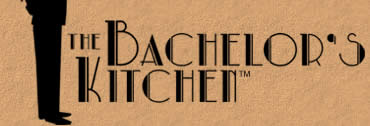Coffee, tea or....Riding the bean of life: How to make the perfect cup 'o Joe.
Let's face it, whether you actually "like the taste" or you're just getting wired on caffeine for another late night of whatever, coffee and tea is an integral part of most of our daily lives. Now, good tea is mostly an exercise in buying quality tea, a foofy teapot, and a collection of some cool handmade cups. For most of us though, truly the big deal is coffee, since we drink so much of the stuff. Here's some quick solid advice on dramatically improving the taste and quality of what you stain your teeth with every am. And we all realize how critical that is because, God knows, skipping our daily cup (or pot) of joe will make most of us look like a heroin addict going through withdrawal.
A. The Beans
Opening a can of whoop-ass on your nervous system might be ok for canned pre-ground coffee, but usually it won't do much for the taste buds. Not to say you can't make a decent cup, but you're starting out behind the power curve with canned pre-ground coffee.
Whole bean is the way to go, especially if you have a way to grind it yourself. If you don't, then just grind it at the store, since invariably there will be a grinder there.
B. The Water
Probably the single most important thing you can do to improve the taste of your coffee is to start with clean fresh cold water. Any filtration will be an improvement, all the way up to purification with a reverse-osmosis system. If you use tap water, at a minimum get it cold and then filter it with a home filter, like a Brita. My "tap" water is triple filtered (I have a filter for my whole house, then I have a two-stage filtration system for my sink).....and yes, it makes a big difference, not to mention that I don't stress that I'm drinking a cup o' fish poo.
C. The Equipment
Although there are plenty of really good quality coffee machines on the market, the first piece of equipment you should own if you are a true coffee aficionado is an espresso machine. There are several reasons for this: One, an espresso machine allows you to make any hot coffee drink known to mankind. That's alot of power to wield, my friend. Secondly, it looks exceedingly cool on your countertop. And lastly, and perhaps most importantly, an espresso machine is one of the key elements in making a perfect cup of coffee.
- A manual espresso machine is either a stove-top or electric model that you manually work.
- An automatic espresso machine is one that you simply load the grounds and select the flow of 190 F water through the grinds.
- A super automatic espresso machine is just that: you press a button and it spits out a shot of espresso into your cup.
I personally like the automatic machine because I can manually control the process a bit more, such as add cinnamon or lemon zest to the grounds. You won't be able to do that with a super automatic.
The next thing you want, is a coffee mill. Not a bean chopper, but a mill that grinds the beans with a burred plate versus a rotating blade. Reason is that the mill properly crushes the beans vice the chopper, which actually bruises the bean and usually adds destructive heat to the grounds. Now, unless you are in some kind of weird twisted relationship, bruising is generally a bad thing....and especially true when it comes to anything cooking-related. I have a Pavoni model MEC-258 coffee mill and it cost me about $40 in 1999....worth every penny.
D. The Process
When you travel to most European countries and order a "coffee", they will take that to mean "cafe", which is generally accepted as a 2oz cup of espresso. What you probably meant to ask for, but didn't realize, is a cup of "cafe americain" or "cafe americano". Guess what "cafe americain/americano" is? Yep, it's a shot of espresso following by 10 ounces or so of fresh hot water. So it looks like the stuff you get back home. Does is taste any better? Um, yes....by a lot.
So, aside from starting with good quality freshly ground beans and fresh cold water, make your coffee with a shot of espresso, then add hot water to fill your cup.
Now, the drawback to this process, and why you probably still want to have a decent coffee maker on hand, is that you really can't make bulk coffee this way, say for a party or a brunch. But, this is the only way I drink my coffee now. See, regular coffee sometimes can be bitter. Or even taste a little like toasted cardboard (oh, joy). The reason for this is that the long exposure to heat causes oxidization, making it bitter tasting.
Couple other things to consider:
- Fresh hot water's optimum temperature is 190 F, no hotter. So boil it, give it about 30 seconds, then add it to your espresso.
- Keep your equipment clean (yeah, ha ha). Really. Residual oils will leave a bitter taste to your coffee.
- When storing whole bean, only keep them in an airtight glass container at room temperature, or sealed in your refrigerator. Freezing grinds is ok, but don't do it with whole bean. Now, I could give you a long, boring technical explanation, but we've got more important things to do, so just press the "I believe" button and we'll call it even.
|


